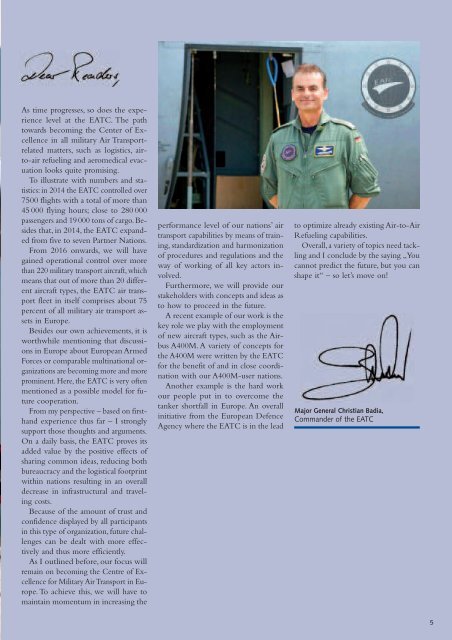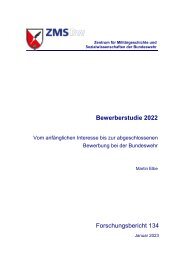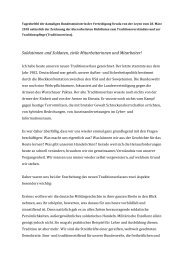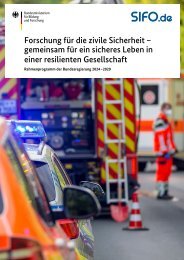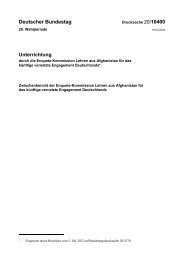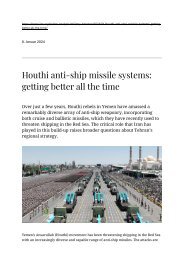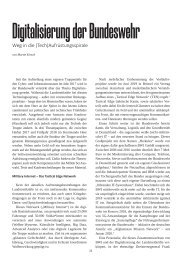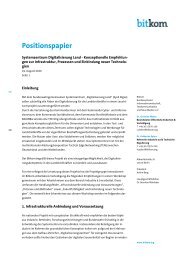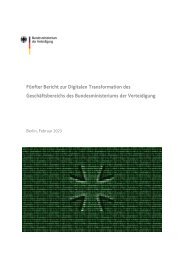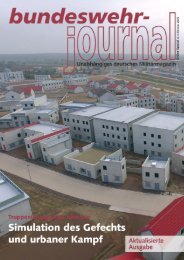EATC
Create successful ePaper yourself
Turn your PDF publications into a flip-book with our unique Google optimized e-Paper software.
As time progresses, so does the experience<br />
level at the <strong>EATC</strong>. The path<br />
towards becoming the Center of Excellence<br />
in all military Air Transportrelated<br />
matters, such as logistics, airto-air<br />
refueling and aeromedical evacuation<br />
looks quite promising.<br />
To illustrate with numbers and statistics:<br />
in 2014 the <strong>EATC</strong> controlled over<br />
7500 flights with a total of more than<br />
45 000 flying hours; close to 280 000<br />
passengers and 19 000 tons of cargo. Besides<br />
that, in 2014, the <strong>EATC</strong> expanded<br />
from five to seven Partner Nations.<br />
From 2016 onwards, we will have<br />
gained operational control over more<br />
than 220 military transport aircraft, which<br />
means that out of more than 20 different<br />
aircraft types, the <strong>EATC</strong> air transport<br />
fleet in itself comprises about 75<br />
percent of all military air transport assets<br />
in Europe.<br />
Besides our own achievements, it is<br />
worthwhile mentioning that discussions<br />
in Europe about European Armed<br />
Forces or comparable multinational organizations<br />
are becoming more and more<br />
prominent. Here, the <strong>EATC</strong> is very often<br />
mentioned as a possible model for future<br />
cooperation.<br />
From my perspective – based on firsthand<br />
experience thus far – I strongly<br />
support those thoughts and arguments.<br />
On a daily basis, the <strong>EATC</strong> proves its<br />
added value by the positive effects of<br />
sharing common ideas, reducing both<br />
bureaucracy and the logistical footprint<br />
within nations resulting in an overall<br />
decrease in infrastructural and traveling<br />
costs.<br />
Because of the amount of trust and<br />
confidence displayed by all participants<br />
in this type of organization, future challenges<br />
can be dealt with more effectively<br />
and thus more efficiently.<br />
As I outlined before, our focus will<br />
remain on becoming the Centre of Excellence<br />
for Military Air Transport in Europe.<br />
To achieve this, we will have to<br />
maintain momentum in increasing the<br />
performance level of our nations’ air<br />
transport capabilities by means of training,<br />
standardization and harmonization<br />
of procedures and regulations and the<br />
way of working of all key actors involved.<br />
Furthermore, we will provide our<br />
stakeholders with concepts and ideas as<br />
to how to proceed in the future.<br />
A recent example of our work is the<br />
key role we play with the employment<br />
of new aircraft types, such as the Airbus<br />
A400M. A variety of concepts for<br />
the A400M were written by the <strong>EATC</strong><br />
for the benefit of and in close coordination<br />
with our A400M-user nations.<br />
Another example is the hard work<br />
our people put in to overcome the<br />
tanker shortfall in Europe. An overall<br />
initiative from the European Defence<br />
Agency where the <strong>EATC</strong> is in the lead<br />
to optimize already existing Air-to-Air<br />
Refueling capabilities.<br />
Overall,a variety of topics need tackling<br />
and I conclude by the saying „You<br />
cannot predict the future, but you can<br />
shape it“ – so let’s move on!<br />
Major General Christian Badia,<br />
Commander of the <strong>EATC</strong><br />
5


